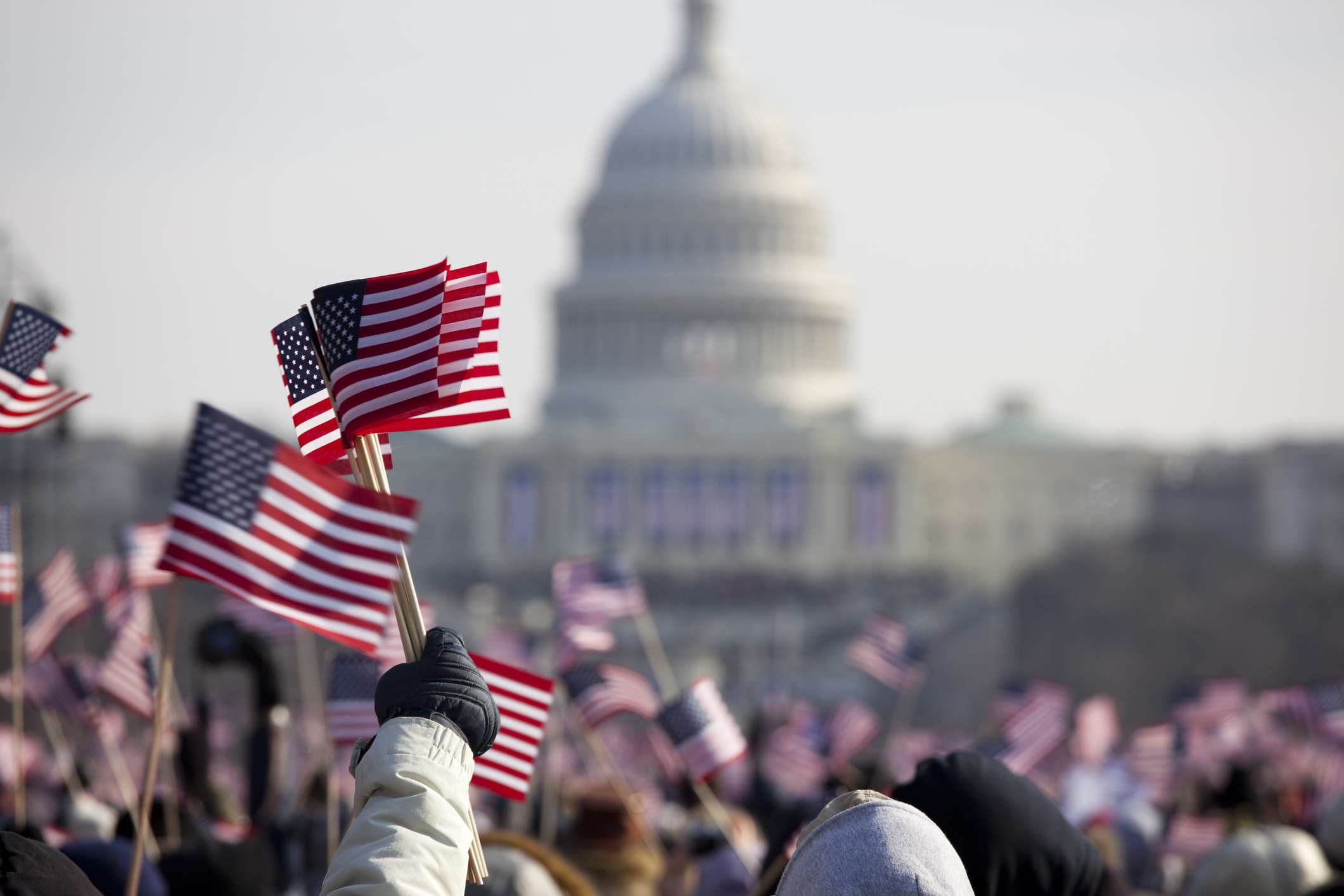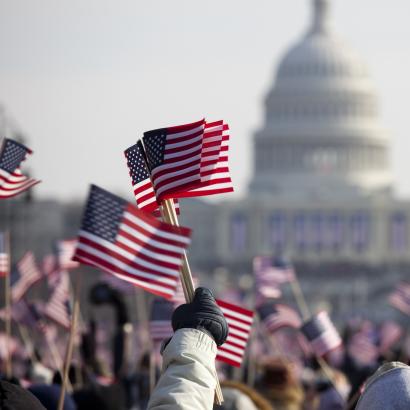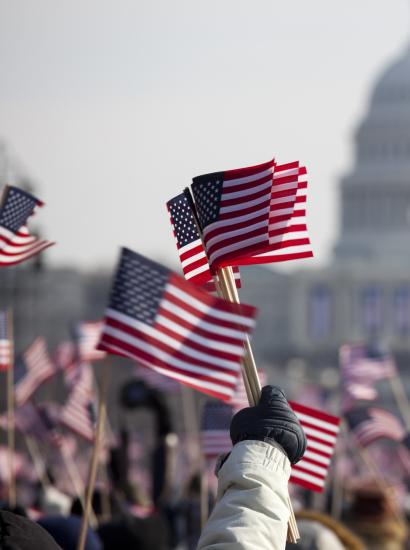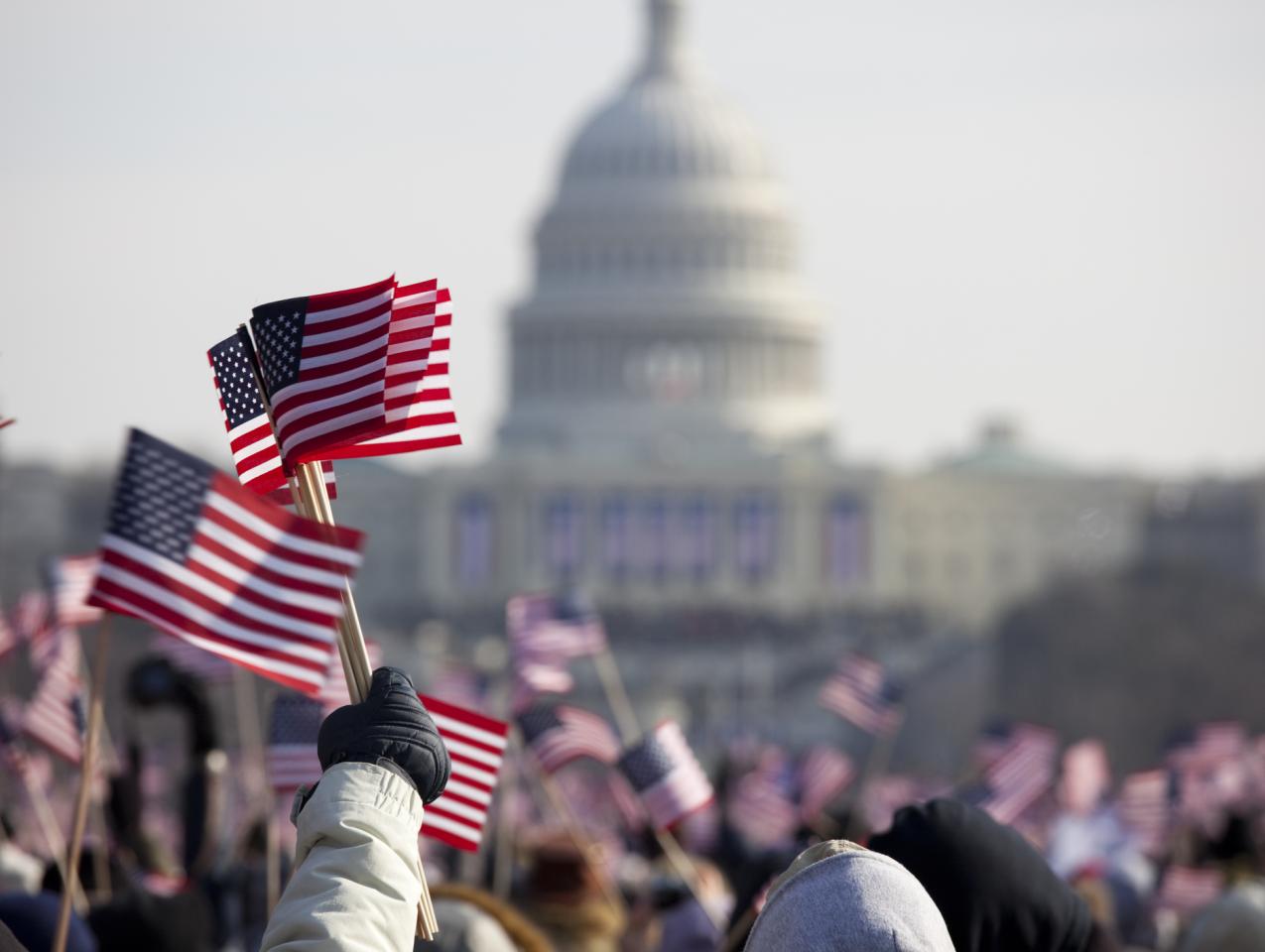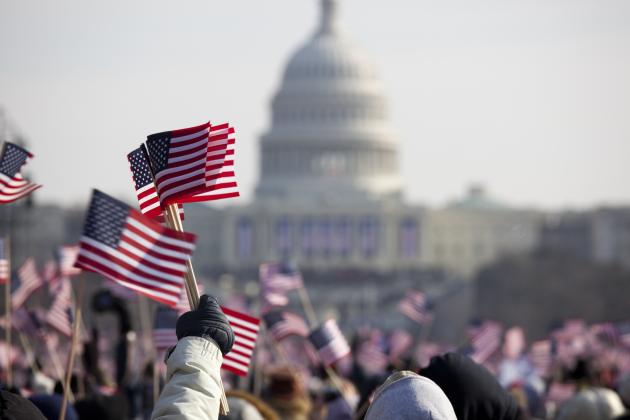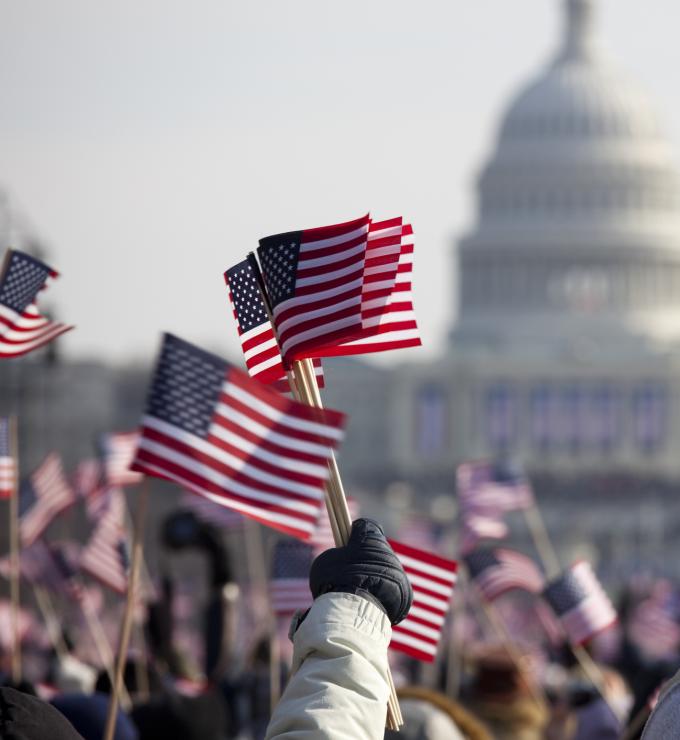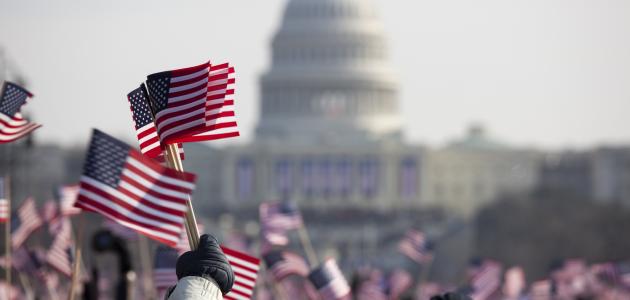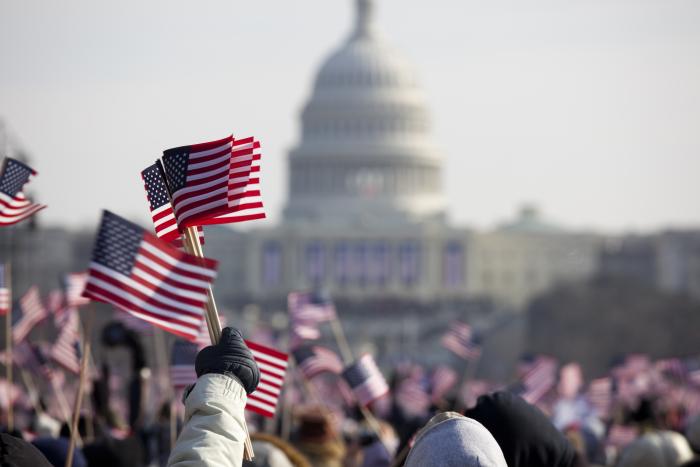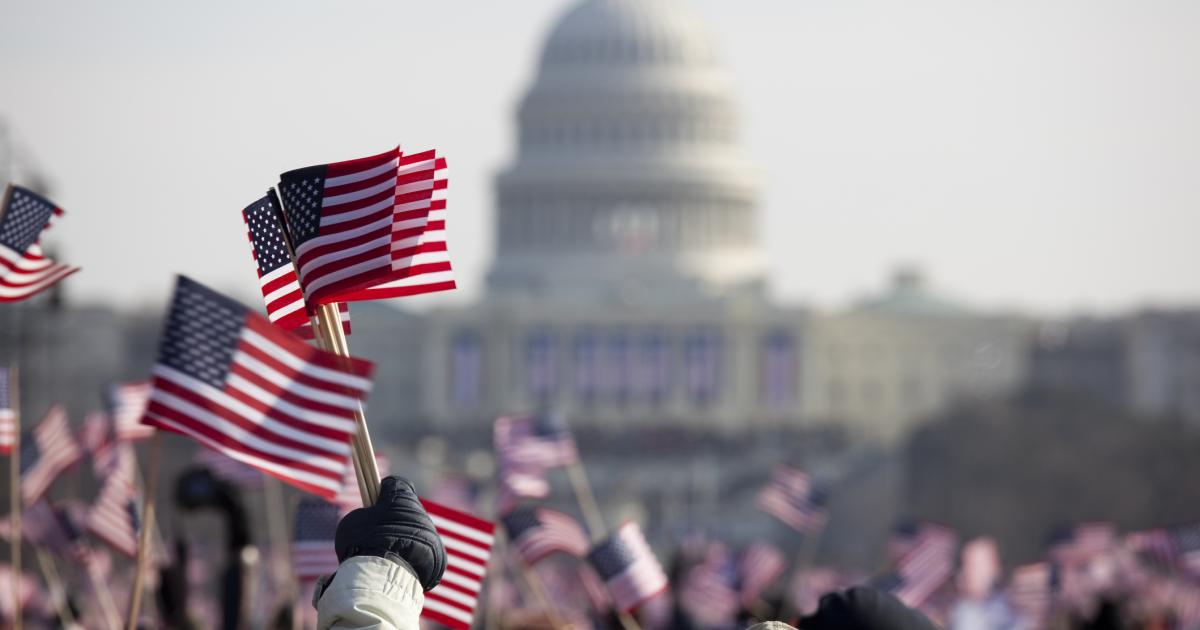- Politics, Institutions, and Public Opinion
- The Presidency
This essay offers a simple hypothesis: the greatest American presidents are those most open to immigration. George Washington, the great founding father, famously called for his new nation to be an “asylum to the world.” And let it never be forgotten that royal decrees that limited immigration to the colonies were a key complaint in the Declaration of Independence. Indeed, the Constitutional Convention in Philadelphia put no limits on foreign immigration in the 4,543 words of the national charter, but did include a seven-word clause in Article I granting legislative authority “To establish an uniform Rule of Naturalization.”
The ideal of equal openness to foreigners was one of the main aspirational stars in the constellation of the American creed. Practical rules about naturalization waiting periods made by legislators and executives quickly emerged as a source of tension, and the Washingtonian norm of open borders to men of all races and religions was broken by two surges of nativism. The first erupted in the economically transformative 1880s and the second in the 1920s following the War to End All Wars. In 1882, the Chinese Exclusion Act banned an entire ethnicity from citizenship. The second isolationist shift manifested in emergency quotas in 1921 and 1924. Resentments against the wave of “non-white” Italians, Jews, and other non-Nordic Europeans were held in check until an outbreak of a worldwide war in 1914 and global pandemic in 1918.
The quota laws inaugurated forty years of near-isolation from foreign migration, including the shameful turning away of Jewish refugees fleeing Nazi persecution during Franklin Roosevelt’s presidency. In fact, it wasn’t until after President John Kennedy’s assassination in 1963 that his successor, Lyndon Johnson, led a major reform to end immigration quotas. The open, colorblind structure of the Immigration and Nationality Act of 1965 holds today, a system welcoming more legal immigrants than any other country.
Looking back at presidential campaigns and administrations around those key turning points, great presidents stand out, as do what historians call the “failures.” Polls of historians and surveys of the public routinely rate Abraham Lincoln and George Washington, whose birthdays we celebrate this month, as two of the greatest presidents. Both stand out in word and deed as part of the club of aggressively pro-immigration chief executives. On the other side of these rankings stand Millard Fillmore and Warren Harding, two of the most restrictionist presidents. Harding signed the 1921 law that slashed legal immigration, fulfilling his promise made during the “America First” election campaign of 1920. Fillmore infamously enforced slavery across state lines and inflamed tensions that led to the Civil War during his brief tenure in the White House, then went on to head the ignominious American Party ticket (home of the Know Nothing movement) in 1856.
My colleague at Stanford, the historian David Kennedy, opened my mind to understanding how immigration represents the continual test of the American creed, more so than race. Kennedy tells the story of General George Patton’s pep talk with his troops just before the invasion of Sicily during World War II: “Many of you have in your veins German and Italian blood, but remember that these ancestors of yours so loved freedom that they gave up home and country to cross the ocean in search of liberty,” in contrast to those ancestral relatives who stayed in Europe to live as “slaves.” There it is. And the model of American immigration is one of incessant testing whether the new alloy of diverse peoples melted together is strong enough to continue. Some generations fail the test, but time seems to continually advance the next generation toward a more perfect acceptance of the creed, more tolerant, more diverse.
How Do We Measure Greatness?
Formally ranking presidents began in 1948 when Harvard professor Arthur Schlesinger had the idea to quantify greatness using a survey of historians. Schlesinger published his poll of historians in Life magazine on Monday, November 1, the day before the re-election victory of Harry Truman. The instructions Schlesinger sent to participants asked them to rate each president in one of five categories: Great, Near Great, Average, Below Average, and Failures, for “performance in office, omitting everything done before or after.” Fifty-five academics responded, and they considered six presidents to be great: Lincoln, Washington, Roosevelt (FDR), Wilson, Jefferson, and Jackson, in that order. It must be said that Schlesinger did not detail his methodology or report average ratings.
The Life story became a sensation, generating widespread public interest and ultimately academic interest as well. It was a powerful combination of science and pop culture, though many people questioned the methodology and the composition of the so-called experts. Why did Schlesinger use historians instead of political scientists, military officers, or distinguished law professors? Why not economists? But that’s beside the point.
He inspired copycats (including his son’s survey in 1996), an academic literature, and dozens of books. More recent versions such as the politically neutral 2004 rankings sponsored by the Wall Street Journal and public opinion rankings done by Rasmussen, Gallup, Quinnipiac, and the Siena College Research Institute are a staple of college political science classes.
The intriguing question is: what factors are correlated with greatness? I’ve found a strong correlation with wartime service, though the main influence seems to be what might be called anti-recency bias. The presidents who served earliest in history have a massive ranking advantage. However, my theory about a greatness-immigration link has never been investigated. Looking through a half dozen books on the topic of presidential greatness, from James Taranto and Leonard Leo’s Presidential Leadership: Rating the Best and the Worst in the White House to Alvin Felzenberg’s elegant The Leaders We Deserved (And a Few We Didn’t), there is nary a mention of immigration.
Which greatness survey should be used as a reference point? We could use the recurring annual Siena College project or the most recent C-SPAN survey of presidential scholars, though it may not matter. Statistical analysis confirms a high degree of correlation among different greatness rankings. I compared the 2000 Wall Street Journal project to the 2017 C- SPAN survey experts and found that the two studies’ detailed rating scores have a correlation of 94 percent.
Immigration: Ideals and Reality
To see if there is a relationship between immigrants coming to the United States and presidential greatness, I organized the official immigrant inflow numbers from the US Department of Homeland Security into presidential terms, and further divided them by the US population at the time.
Which five presidents oversaw the most immigrant inflows in raw numbers? They were Barack Obama, George W. Bush, Theodore Roosevelt, Bill Clinton, and George H. W. Bush. The elder Bush’s presidency is the most impressive given that his time in office lasted just one term, whereas the others were able to tally such large numbers over two full terms.
However, relative to the national population, the presidents in office during the arrival of the most immigrants are some of the least remembered: Millard Fillmore (5.7 percent), Chester A. Arthur (4.7 percent), and Franklin Pierce (4.3 percent). And contrary to conventional wisdom, Franklin Roosevelt was by this measure the most unwelcoming president. During FDR’s presidency, one immigrant per 1,000 Americans was allowed entry during each of his first three terms. His successor, Harry Truman, welcomed four times as many.
When we consider instead the relative level (in contrast with arrivals), the nadir occurred in the 1960s during Lyndon Johnson’s presidency. Does this mean that LBJ was less welcoming than any other president? Exactly the opposite. This contrast teaches us that the level of immigrants during every presidency is primarily driven by the laws and policies set in the prior decade.
Here’s the surprise: the relationship between immigration numbers and presidential greatness is actually negative. The negative correlation between immigration inflows and greatness (–37 percent) as well as immigration levels and greatness (–30 percent) is significant. So a first, flawed glance at the data suggests that the greatest presidents welcomed the fewest immigrants. We know this is flawed because President Lyndon Johnson championed and signed what is universally acclaimed as the most expansive federal immigration reform, the effects of which took more than a decade to be fully felt. Johnson is ranked consistently as a “near great” and is also clearly one of the most pro-immigration policy makers, but the raw numbers on immigration fail to tell his story. A purely quantitative approach is also stymied by data limitations: no arrivals data were recorded before 1820 and the first census to account for foreign births of citizens was in 1850, meaning presidents from Washington to Polk are not included in the correlations above.
Another way to test the theory is to make a qualitative ranking of presidential policies. I endeavored to do just that, contacting a handful of immigration scholars with the breadth of knowledge to offer their ratings. I did not tell the participants about my theory; I said that the project was simply to give each president a score on a 1– 7 scale, with 7 representing policies “most open to immigration” and 1 representing “most restrictive.”
Dan Griswold, a senior research fellow at the Mercatus Center at George Mason University, was willing to assess recent presidents—with the most favorable marks given to LBJ—and said, “I actually rate recent Republicans (Reagan, Bush I & II) as higher than Clinton and Obama because their rhetoric was good and they signed or supported liberalizing legislation.” But Dan, like many others, didn’t feel he could rate all of the presidencies going back to 1789.
Ultimately, two scholars were willing to provide ratings for the full slate of chief executives, in addition to my own. The first to respond was Tyler Anbinder, a professor of history at George Washington University and author of the monumental City of Dreams: The 400-Year Epic History of Immigrant New York. Anbinder rated most nineteenth-century presidents a neutral 4, and gave no president a score of 1 or 7.
Alvin Felzenberg, author of The Leaders We Deserved, also generously replied with ratings and comments, though his sense of the scale was different. He awarded a 7 rating to most of the early presidents: Jefferson, Madison, Monroe, Jackson, Van Buren, Polk, and so on. He points out that the political effect of the Alien & Sedition Acts under John Adams (rated 2 by both Felzenberg and Anbinder) activated efforts within the opposition party to organize immigrants as a voting bloc that was carefully protected by successive Democratic (then called Republican) presidents. It wasn’t until Lincoln was elected to the White House that the Democratic Party lost its hold on immigrants as a voting bloc.
Among the rankings of the three of us, LBJ garnered the highest average immigration policy as “most open” to immigration, followed closely by Kennedy, then a tie between Lincoln and Obama. Other presidents with very “open” ratings are Washington, Jefferson, Wilson, and George W. Bush. The most “restrictive” are Harding, Coolidge, and John Adams.
History’s Judgment
My hypothesis is confirmed. Ratings of presidential immigration openness have a very strong, positive correlation with ratings of presidential greatness: 45 percent with C- SPAN scores and 37 percent with the Wall Street Journal scores. That means somewhere between a third and a half of the variation in presidential greatness is explained by immigration policy. This strong relationship doesn’t necessarily mean that greatness causes a president to be more open to immigration. There are certainly presidents considered above average who favored a restrictionist policy. However, the high correlation does affirm how history judges past leaders, and that those favoring a more open immigration policy are considered greater.
The full list of presidents and their average immigration policy rating show outliers rather clearly. Washington, Jefferson, and Lincoln were the three most open to immigration during the country’s first century. These three, perhaps not coincidentally, are also famous for taking actions to strengthen the Union and defend the American creed. On the other side of the ratings, Harding and his successor, Coolidge, set the standard for anti- immigrant policy.
Revisionist historical takes that emphasize the worst of America’s past—slavery, nativism, and the widely ridiculed notion that the true founding was in 1619—miss the point. As President Obama often remarked, the American story is one of slow progress over ancient wrongs. Slavery, racism, and nativism dominated history long before the American founding and are well documented in ancient texts from Plato to the Old Testament. Is it really any surprise that American immigrants are the definitive instrument in forging this new nation—not a racial, ethnic, or religious homeland—of radical equality that is still breaking up the evils of the Old World? And is it any surprise that Washington and Lincoln are heroes in this ongoing story?
Excerpted from The Immigrant Superpower: How Brains, Brawns, and Bravery Make America Stronger, by Tim Kane (Oxford University Press, 2022).







